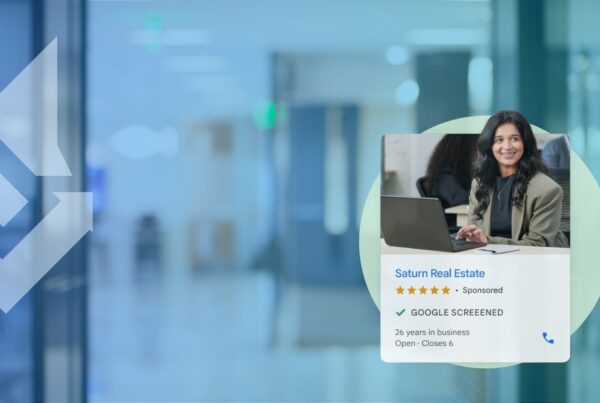Cost Per Lead (CPL) is more than just another buzzword—it’s a game-changer for businesses looking to make smarter decisions about their ad budgets. When you know how much you’re spending to generate a single lead, you can fine-tune your strategy, focus your resources, and see better returns.
This guide breaks down CPL in a way that’s simple and actionable. You’ll learn what it means, why it’s important, and how to use it to improve your marketing efforts. Whether you’re new to advertising or looking to sharpen your skills, this guide has you covered.
What is CPL?
Cost Per Lead (CPL) is a metric used to measure the cost of acquiring a single lead through advertising.
A lead is typically someone who shows interest in your product or service, such as by filling out a contact form, subscribing to a newsletter, or downloading a resource. To calculate CPL, divide the total amount spent on a campaign by the number of leads generated.
For example, if you spend $500 on an ad campaign that brings in 50 leads, your CPL is $10. This number clearly shows how much it costs to attract potential customers.
For perspective, the average cost per lead across industries is $198.44, though this number can vary widely depending on your niche and ad strategy. CPL helps you understand the efficiency of your advertising efforts, making it easier to decide where to allocate your budget for maximum impact.

Why it’s Important for a Business
CPL is a critical metric for businesses that rely on lead generation to drive sales. Knowing your CPL allows you to:
- Measure the effectiveness of your marketing campaigns
- Set realistic budgets for future campaigns
- Compare the performance of different advertising channels
For instance, if your CPL is lower on social media ads than on search ads, you may want to shift more of your budget to social media. In short, CPL offers transparency, enabling data-driven decisions that maximize the impact of your advertising efforts.
Factors That Influence CPL
The Cost Per Lead (CPL) is affected by various factors, each significantly influencing how much you spend to acquire a lead.
Knowing what influences CPL helps businesses focus on areas that matter most to improve their ad efficiency. Several key factors impact CPL.
- Industry and Niche – Some industries are naturally more competitive, such as finance or healthcare, leading to higher costs for leads due to intense competition.
- Ad Platform – Platforms like Google Ads, Facebook, and LinkedIn attract different audiences and have unique pricing models. For example, LinkedIn tends to have a higher CPL due to its professional audience.
- Target Audience – Narrower targeting increases relevance and lead quality but can raise costs. For instance, targeting based on detailed behaviors or job roles usually costs more than broader campaigns.
- Ad Quality – Visually appealing Ads, that have a clear call to action, and directly address the audience’s needs perform better and lower.

Cost per conversion, conv. rate, and conversion count for Google Search Ad campaign, under the “Overview” tab
How to Optimize CPL for Better Results
Lowering CPL while maintaining high-quality leads is a key goal for any marketing campaign. Optimization involves strategic improvements that enhance campaign efficiency without overspending.
- Refining Targeting – Use specific audience settings based on demographics, interests, or behavior to reach the right people at the right time. For example, targeting users who have interacted with similar products can increase the likelihood of conversions.
- Testing Ad Variations – A/B testing different headlines, images, and call-to-action phrases helps identify what appeals most to your audience. For instance, swapping a generic headline for a benefit-driven one could improve performance.
- Improving Landing Pages – Align landing pages with your ads to create a seamless experience. Pages that load quickly, offer clear value, and make it easy for users to take action (such as filling out a form) convert better.
- Regular Campaign Reviews – Reviewing campaign performance ensures that your strategies are working. Identifying underperforming ads and reallocating the budget can help reduce wasted spending.
Taking these steps can lead to a lower CPL while maintaining or even improving lead quality, ensuring your ad spend is as effective as possible.

Other Metrics to Watch
CPL is crucial, but it’s most effective when viewed alongside other metrics that give a fuller picture of your campaign’s performance. Your optimal list of KPIs will vary by specific goals and even your industry, but some are essential.
Your conversion rate tracks the percentage of leads who take meaningful actions, such as scheduling a call or making a purchase. Return on Investment (ROI) is the profitability of your campaigns by comparing costs with revenue generated.
Finally, click-through Rate (CTR) monitors how often people click on your ads relative to how many see them.
Why?
Each of these metrics offers insights that CPL alone can’t provide. Tracking them alongside your CPL helps you refine your strategy and focus on getting the best results.
For instance, a high CPL paired with a strong conversion rate could indicate that while leads are expensive, they’re likely to turn into paying customers, so the investment is worthwhile.
Similarly, low click-through rates might reveal that your ad creatives aren’t engaging, even if CPL seems reasonable, highlighting an area for improvement.
ROI ultimately ties everything together by showing whether the leads generated are contributing to your business’s profitability.
Final Thoughts
Cost Per Lead (CPL) is a metric that offers a window into the efficiency of your marketing. Knowing how to calculate it—and understanding what influences it—enables you to make smarter, more informed decisions about your ad budget.
Smarter advertising begins with watching the right numbers and making strategic tweaks. At Wolfpack, we specialize in helping businesses achieve measurable results through data-driven strategies. If you’re ready to maximize your CPL and overall campaign performance, join the Pack today.




